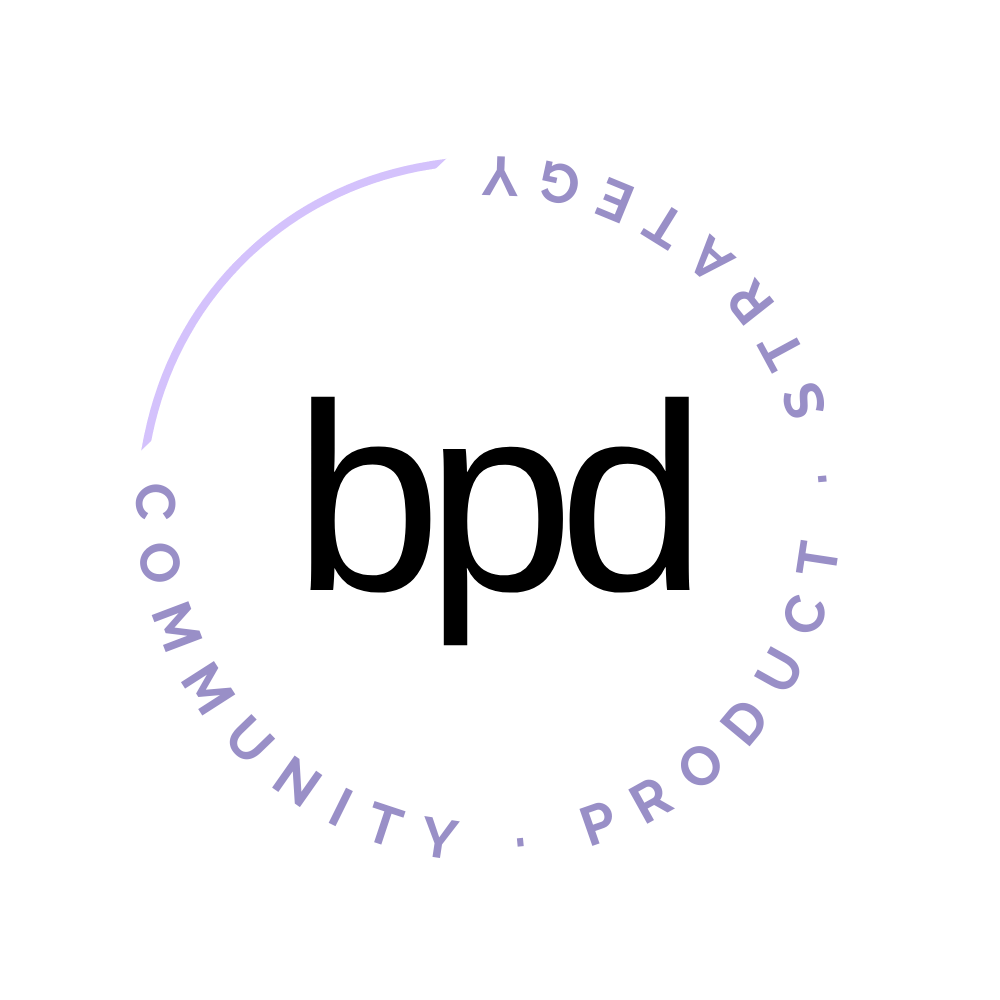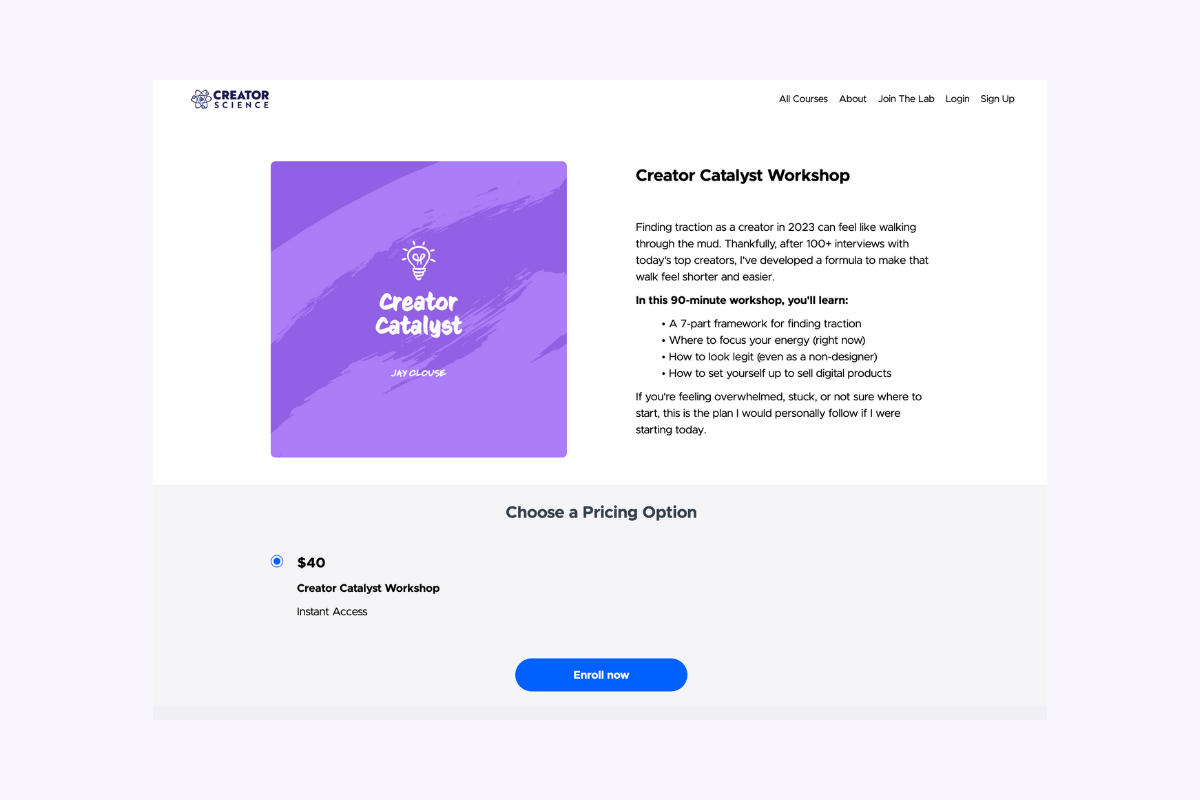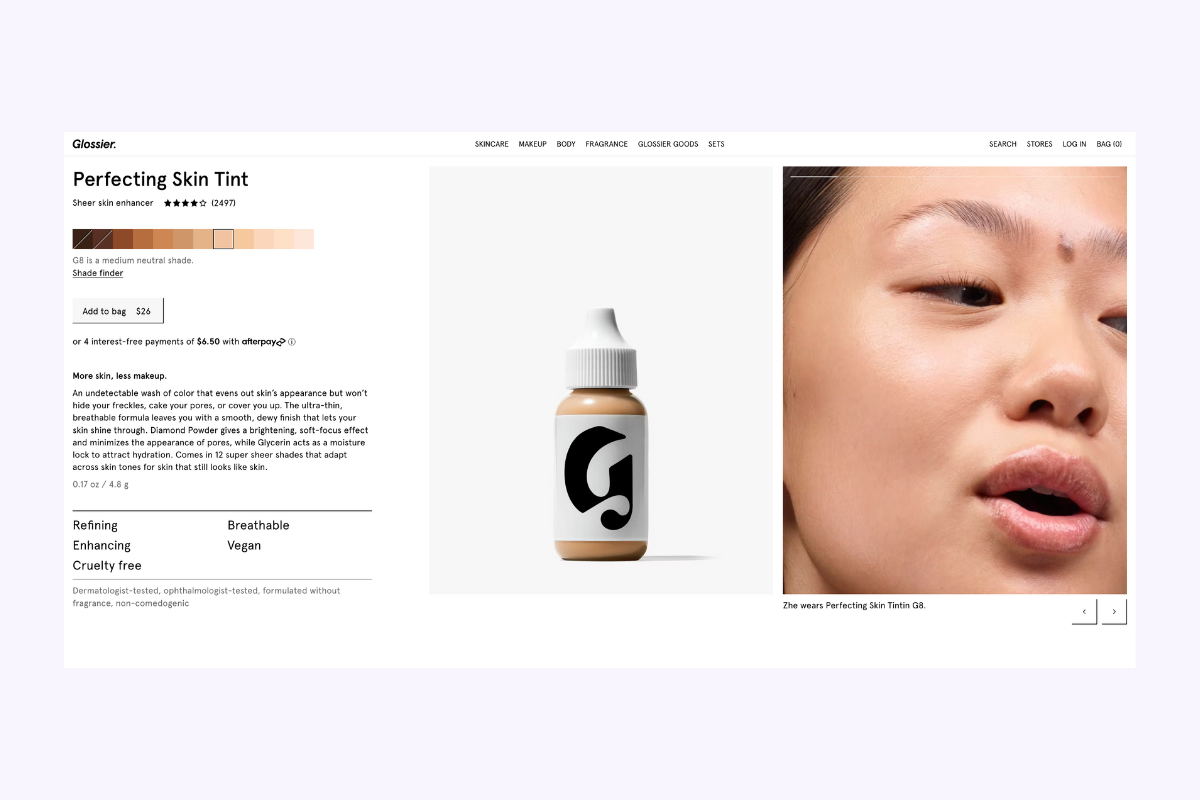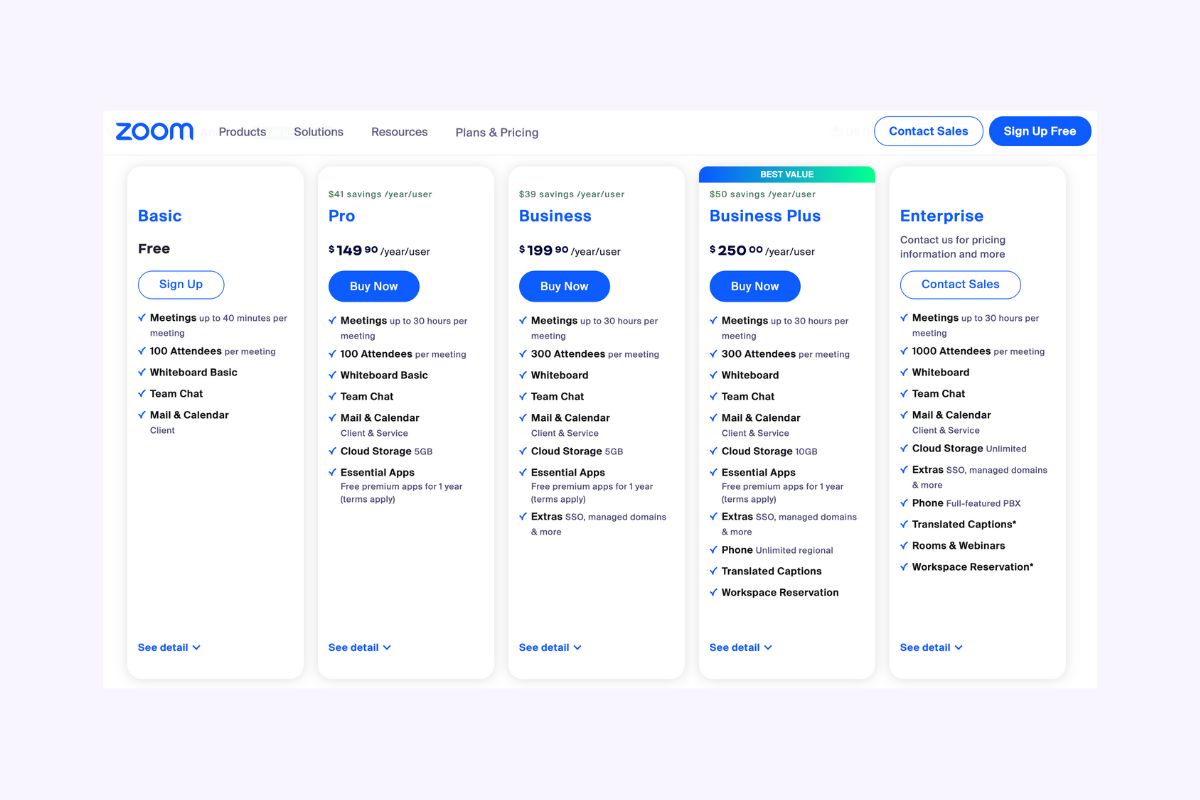#25 Play The Long Game: Create Your Customer Ascension Strategy
Ascension is how you think about serving your customers at different stages of their transformational journey. You can serve them with different products, tiers of your product, or experiences.
Ascension is a key strategy to grow your revenue and it’s a win-win because it also helps you serve your customers longer increasing their LTV (lifetime value).
It’s a lot easier to serve a customer longer than it is to find a new customer.
Allow your first product, even if that product is free, to show you what your next product should be. To think about customer ascension it’s best to treat everything in your business like a product.
For example, I think about this very newsletter as a product– and it’s a free email newsletter. But it’s also a core component of my long-term business ascension strategy.
Let’s take a look at some examples.
Creator Entrepreneur:
My friend Jay Clouse helps creatives become professional creators, meaning they can support themselves and make a living from their creator business.
He supports creators at different stages of their journey to go pro – from thinking about becoming a creator (Creator Catalyst Workshop), practicing and learning and growing as a creator (Starter Membership), to building a sustainable creator business (The Lab Membership).
And those products range from $40 to $3,000.
E-Commerce:
Glossier, founded by Emily Weiss, started as an online beauty blog called "Into The Gloss," where Emily shared beauty tips and product recommendations. With the insights gained from her blog's community, she launched Glossier with a single product, the "Glossier Perfecting Skin Tint."
Now my bathroom counter is covered in countless Glossier products.
Software Companies (SaaS):
This is the most obvious and common example. But software companies don’t start this way. You want to start out by serving one type of customer, otherwise your product roadmap will be a nightmare. It’s impossible to serve different needs all at once when you’re starting out.
Once you have a big enough development team to handle supporting features for customers at different levels, then you can add tiers.
Zoom had two plans when they launched: free + pro plan. Now they have 5 plan options serving everyone from students to enterprise businesses with custom pricing.
You Don’t Have To Build In Stage Order
Even though I call it customer ascension, you might already have a product that serves step 3 of a 5 step transformational journey. That’s okay– you just have to prioritize what step you develop next. For that decision you want to balance business goals with customer needs.
For example, let’s say your customers are joining your product but feeling overwhelmed and it’s effecting their experience – you might need to focus on the product (or tier) that serves them a step before… even if that means a lower price point. It’s worth it for the long-term business value (live time value of customer).
Let’s say your customers are joining your product and crushing it and feeling great but a portion of them are asking you for what’s next. These customers might have “graduated” and be in a different category than your larger customer segment.
This is an opportunity to add another tier or develop an additional product at a higher price point.
And if you don’t? Someone else will. That’s the name of the game!
But this is a long game. You can’t stand up a full transformational journey overnight. If we could, we’d all be millionaires. But you can probably do it sooner than you think you can.
Your Action List:
Outline your current customer journey - where are the obvious opportunities to add and expand?
Talk to your customers - where is your product not serving them right now? What are their biggest challenges? If you can, talk to people that have cancelled or moved on from using your products.
Once you decide what stage you’ll develop next, deeply understand the core problems at that stage of the customer journey.
Develop an experimental product to solve the core problems and get it in front of your customers.
Iterate until you find product-market-fit. Then it’s time for a hard launch.
If you loved this essay please consider subscribing to get the newsletter delivered to your inbox every week. You’ll receive additional resources only available in the email newsletter.



